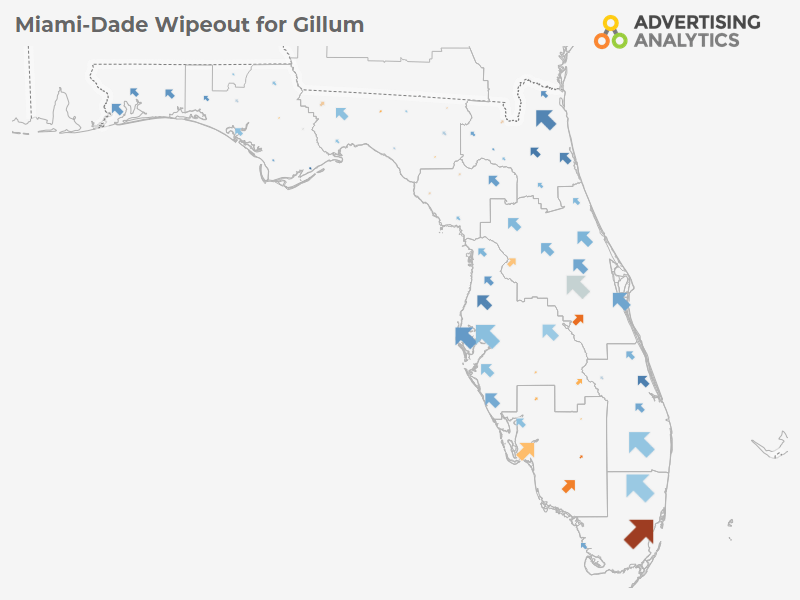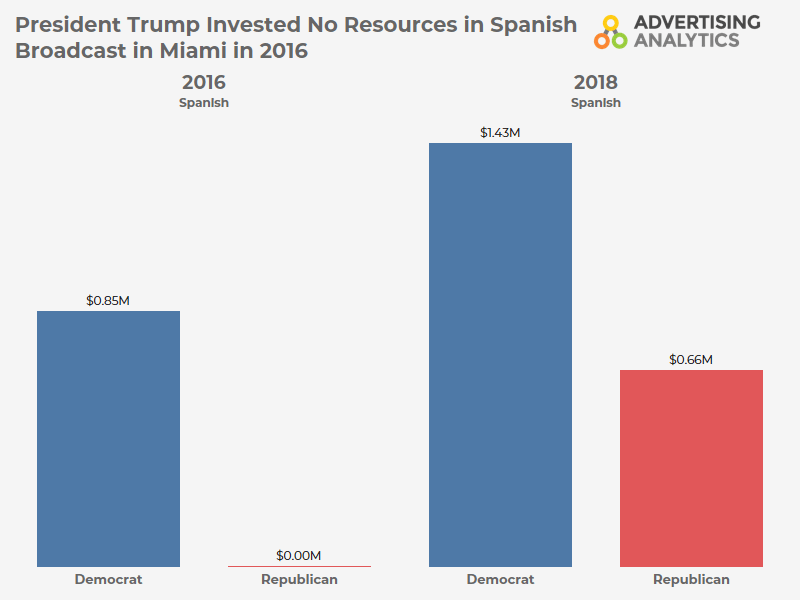The nation’s most crucial swing state, Florida, was once again at the center of the American political universe in 2018. Florida was home to several competitive congressional districts, a senate contest between a longtime incumbent and a former Governor, and a gubernatorial contest between progressive darling Andrew Gillum and close Trump ally Ron DeSantis. Both statewide Republicans defied the polls by squeaking out narrow victories, while Democrats flipped two Congressional districts in South Florida. Much of the post-election analysis has hinged on what these results mean for the 2020 presidential contest, where Florida remains key to President Trump’s reelection bid. Comparing the gubernatorial results to the 2016 presidential election offers some insights to the trends that will be key in 2020.
Florida Election Analytics

This map compares county level results from the 2016 presidential election to those of the 2018 gubernatorial. Two things immediately stand out, the number of moderately sized, suburban counties that moved slightly to the left, and the big red arrow that is Miami-Dade, the largest county in the state. DeSantis outperformed President Trump by 4.6% in Miami-Dade, the biggest shift from 2016 to 2018 of any county in the state. This shift won him an extra 36k votes, almost exactly his margin of victory, and appears to largely be driven by DeSantis’ strong performance amongst Hispanic voters. According to exit polls he won 44% of the Hispanic vote statewide, 9% more than President Trump won in 2016.

Despite his highly publicized struggles with Hispanic voters, Trump did not air any ads in Miami on Spanish language broadcast in 2016. DeSantis, however, attempted to appeal to these voters. Despite Gillum running nearly 2x more Spanish-language ads in Miami than DeSantis overall, he lagged behind in airing his first ad. DeSantis went up with “Beisbol” on 9/14, nearly two weeks before Gillum’s first ad aired. This strategy proved successful, as DeSantis made major strides amongst Hispanic voters statewide, and within the Miami market. Given how tightly DeSantis tied himself to the president during the race, it is worth wondering whether, with concerted outreach over Spanish-language media, the President might be able to replicate Governor DeSantis’ success with Hispanic voters.
“What does this mean for 2020?” is the question that everyone wants answered. And the simple answer is that no one knows, however, there are two scenarios that seem highly possible. If you are a Republican (or a pessimistic Democrat) you might look at DeSantis’ success with Hispanic voters, combined with recent polling nuggets that show President Trump’s approval rating with this group increasing, and think that he can replicate DeSantis’s performance in Miami-Dade. This, while maintaining his 2016 margins in the rest of the state would lead to a comfortable victory. If you are a Democrat, one might take solace in the fact that Gillum made gains in many of even the smallest and whitest counties in the state, which combined with a return to 2016 margins in Miami-Dade would likely result in a Democratic victory. There are nearly infinite other paths to victory for each party, however these scenarios represent plausible ideals to aim for.



